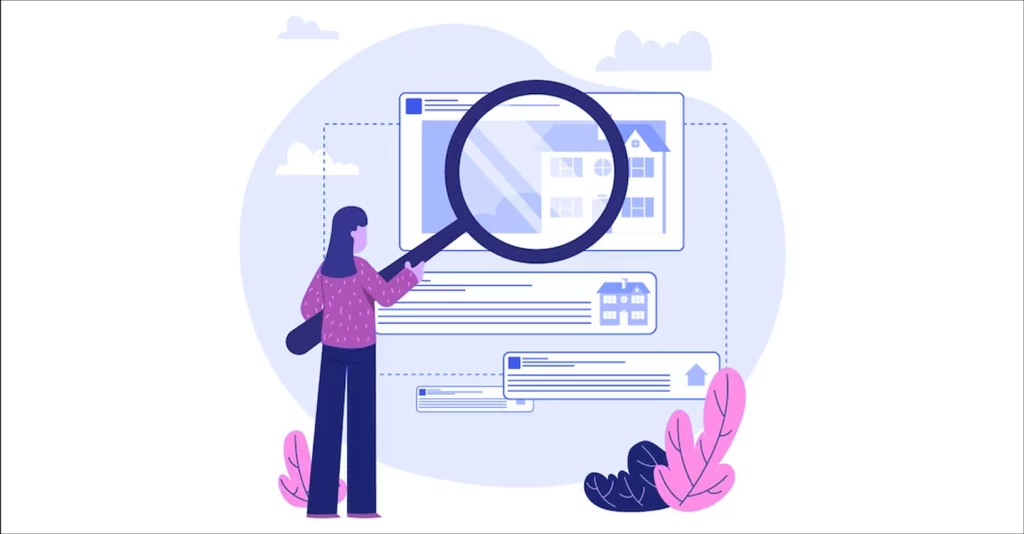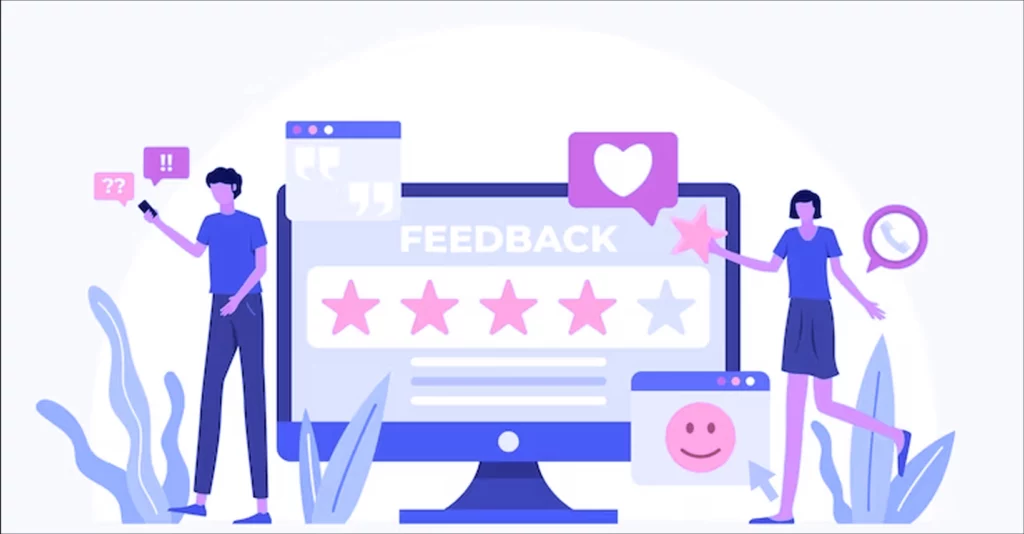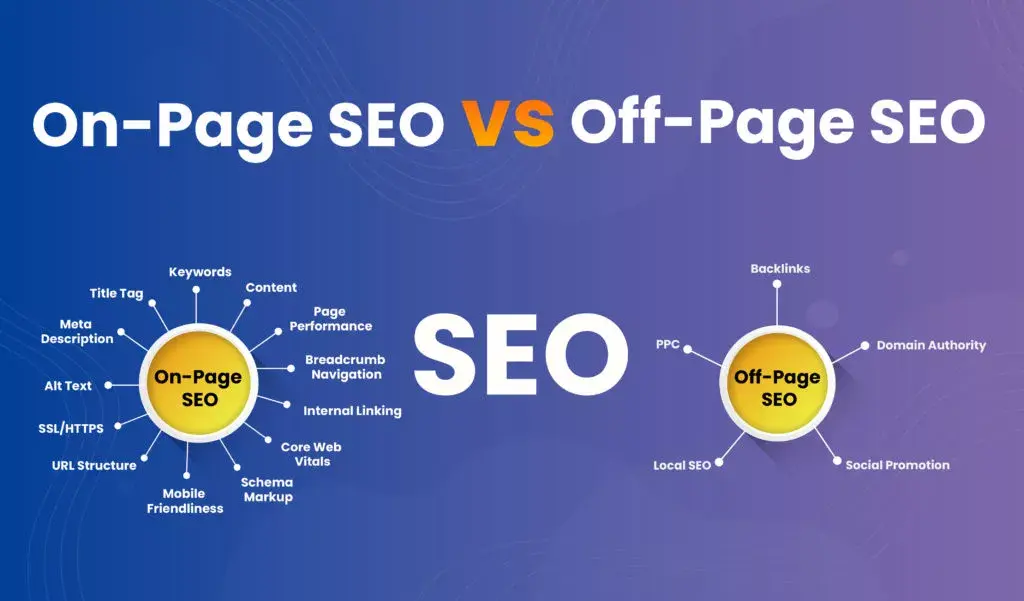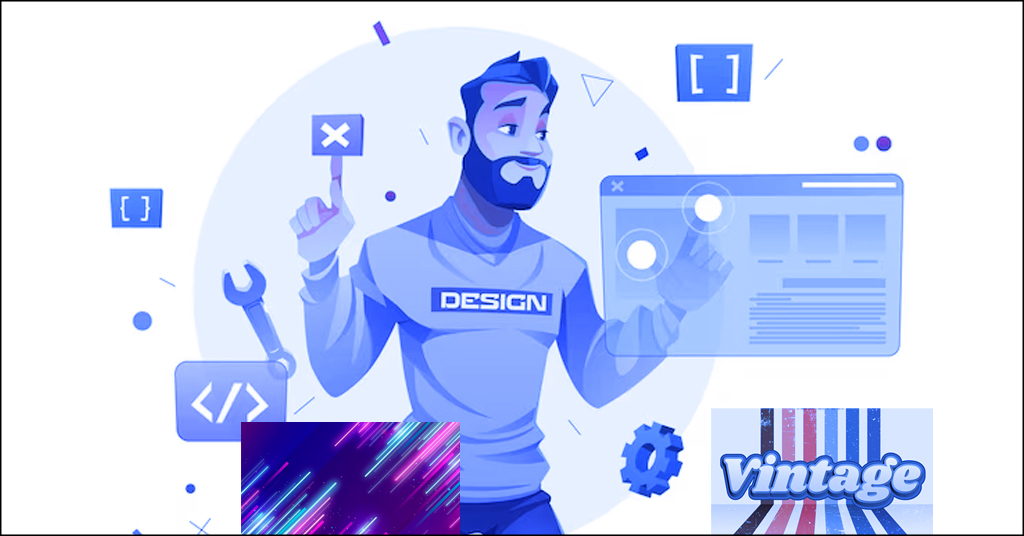Is Your Website Missing These Crucial Pages? Upgrade Your Web Design Now
Table of contents

In today’s digital world, website upgrades are critical. Keeping our online presence fresh and relevant is vital for attracting visitors and being competitive. Regular changes ensure that your website remains accessible, visually appealing, and search engine optimized.
Including the proper pages on your website is like creating a house with the right rooms. A website, like a building, requires pages that offer users the information and functionality they require. As a result, incorporating the appropriate pages into your website is critical for providing a user-friendly experience that matches your visitors’ needs and expectations. Before thinking about what to write, you should make a strategy explaining what each page will include. This manner, you avoid repeating yourself or forgetting important acts.
The most important purpose of an online portal is to attract potential clients, achieve a high conversion rate of users to customers, and increase cash flow into your organization. Your website should appeal to the user so much that he feels forced to shop there. The initial glimpse establishes or breaks an impression. A bland and boring-looking homepage would only motivate people to continue browsing the site. However, a visually appealing homepage will undoubtedly capture your attention. You must cooperate with your website designer and provide an understanding of your business so that he can supply you with the greatest outcomes.
Another thing to remember is that revamping sites and web pages again is time-consuming, so spend time and ideas on the first attempt so you don’t have to call your web designer again. The website’s target audience should also be considered when designing. Studying people’s likes and dislikes and their social behavior can help you connect with your target audience. Every website must have Certain crucial features to maintain consistent visitor levels and a permanent online presence.
Most critical things that may be missing from your website
-
Does your site have a mobile version?
Websites are created in two formats: mobile, which can be viewed on a tablet or smartphone, and desktop, which can be viewed on a traditional desktop or laptop computer. A mobile version allows a website to be read optimally on a smartphone or tablet despite significantly reducing screen size. A clever and good website should include both versions, as the traditional version cannot be adequately viewed on a smartphone.
It becomes much more important to consider how many people you see daily carrying a smartphone or a tablet computer. In the lack of a mobile version, your website becomes unavailable to users who do not use a desktop or laptop but instead access the internet via smartphones and tablets.
-
Social media connectivity
Social media platforms like Twitter and Facebook can aid in increasing website traffic. Solid synchronization with such a social platform enables you to gain more followers who leave comments and likes on your products and services. Remaining active on social networks attracts possible customers in the future.
-
Trustworthy website

Many visitors do not convert into potential consumers because they are cautious about online payments due to security concerns. Many events have involved internet fraud and disclosing sensitive information like credit card numbers. Choose a trustworthy and dependable payment gateway to ensure secure online transactions on your website. This will instill confidence in the buyer and urge him to do business with you regularly.
-
Attention to Content
You should place a high value on the content or written descriptive material on your website. Good content should provide a vivid explanation of your products to the user in the shortest and simplest feasible language so that he fully understands what he is purchasing. Any irrelevant text should be avoided at all costs, as it deviates from the topic and confuses the reader. To gain higher page ratings on search engines, utilize specific keywords related to your industry and products in your content.
-
Easy in, easy out
A sophisticated navigation system reduces surfing speed and confuses the visitor. A website should have clear options and menus so that users can easily find the product or service they are looking for. If a user is repeatedly sent to the wrong page, he will become frustrated and eventually leave your site, possibly never to return. Nowadays, users are strapped for time and want to complete their online purchases as quickly as possible before leaving the site.
What key pages are missing from your website?
-
Homepage
Your homepage is the grand entrance. Though only some visitors will enter through the main door (for example, through search results or advertisements), this is usually the first page they view. What Information Belongs on Your Website’s Homepage?
- A headline and subheading.
- Information on the product or service
- Connection to the relevant sections which for instance can be product lines
- CTA
- Testimonials of other actual customers that have benefited from the service.
- Anything else that kindles interest and reinforces your pass‐on is ‘stuff that works. ’
Users can immediately decide as to whether or not a given webpage is relevant. Make sure that you grab the visitor’s attention right from the start, tell an engaging story, and keep it centered on the visitor. A call to action specifically guides the reader on what must be done.
Here are various justifications for the significance of a “about us” page:
- Introduction to the website: It offers a brief insight regarding the objective of the website, what it provides to consumers and the target demographic group. The relevant analyses show that the homepage can orient the visitors to the objectives of the site and the overall theme.
- Navigation: A website’s homepage is its access starting point or the home page interface. It should connect to other important pages on the site like About Us, Products/Services, Contact Us, or the blog. Thus, visitors can locate potential objects of interest, and they are compelled to devote more time to the site’s perusal.
- Branding: On the homepage, some of the concerns are that the branding and style of the organization can be carved out. It should contain the symbol of the organization in the form of a logo, its primary and secondary colors, and other graphic items that should reflect the corresponding brand image. This helps in creating a tight and integrated structure and would make a stronger and easier-to-remember impact on the users as well as enforce the organization’s brand.
- Initial Impression: The homepage is the first thing a visitor sets his/her eyes on, and this is the first impression of the organization behind the webpage. The creation of the first impression of the organization is very important since this will determine how the visitors perceive the organization and if they would like to do business with it.
-
About page
It is mostly used in business websites to introduce the business or the brand, gain the reader’s trust, and convert clients. It also enhances your believability and creates ways to engage the readers while informing them of the other faces and tales of the company.
Some of the information can be miscellaneous and fun facts, team photos, achievements, company mission and/or vision, or any unique selling proposition. Anything that makes you unique and special to your rivals and, at the same time, is appealing to your readers. Here are a few reasons why a “about us” page is crucial:
- Enhances trust and credibility: This page can be useful to gain and build confidence and creditability, as the information provided can inform the reader about the organization’s leaders, their education, work experience and achievements.
- Differentiates from Competitors: In the present fast-growing and highly saturated business world, this is where one establishment looks for ways to separate itself from the other. An “About Us” page helps the organization and the team to gain attention by focusing on their distinctions.
- Humanizes the Brand: Individuals relate with other individuals, and thus an “About Us” page can assist the brand in giving the face of the organization. It is about the narration of the story of an organization and the people related to it, which may help the visitors to establish an emotional bond with the website. Besides, where an “About Us” page contains the relevant keywords or phrases, the page also contributes to the SEO. It assists in increasing the website rating by offering more information about the organization and its aims and objectives.
- Transparency: In today’s world of the shared economy, customers appreciate openness and honesty. An “About Us” page can encourage accountability since the layout and content of the page provide the public with information about the history, principles, and mission of the company.
-
Contact Page
The contact information page makes it possible for visitors to your website to contact you. It is recommended to provide your company’s mailing address, phone, email, live chat, social media profile links, map location, and business hours.
If the visitor comes looking for information or help you may provide links, such as ‘Knowledge Base’ or ‘Frequently Asked Questions’. It will also assist in keeping people engaged on your website longer and enhance the user experience, thus cutting off the loads of incoming email or support inquiries. An affixed contact form using CAPTCHA may help to eliminate the spammers getting through to you.
Here are some reasons you should include a Contact Us page on your website:
- Being approachable: Creating a Contact Us page is also useful since it enables visitors to contact the organization to build trust. It shows the friendly ken of the organization as well as the willingness to establish a working relationship with the clients.
- Customer inquiries: It is a page where site visitors are free to ask anything concerning the products or services offered by the organization and the price, among other questions. This can help in presenting customers with information and clearing their minds, thus resulting in them making a purchase.
- Partnership opportunities: The organization’s Potential partners or collaborators intending to work with the organization, should use the Contact Us page. This can mean new business opportunities and cooperation that would be mutually advantageous.
- Technical issues: The issues of a technical nature or bugs on the website can be reported through a Contact Us page. That can help enhance the user experience and make sure, for instance, that the site is loaded fast.
The feedback and suggestions on how the organization can improve are well captured in the Contact Us page that visitors can use to post their comments. This can help the firm to enhance its goods or services while at the same time fortifying the bond with consumers.
-
Blog page
A blog page is a main index of articles published on a particular Blog. Despite this area being optional, it is highly recommended to set up a blog page for aesthetic and promotional purposes. Creatively speaking, blogging can perfectly be used to discuss topics that interest you or get you moving.
Just to recall, using certain ideas as written about and incorporating correct keywords into the website’s content helps to achieve better rankings. Moreover, with your knowledge, you can become an expert in the presented subject and share it with others. The following are some advantages of including a blog page on your website:
- Drive visitors: This is a method of helping ensure that the visitors you want to come to your website will be attracted by the fresh, quality, and relevant matters that you post on your blog. Sites like Google all prefer websites that have content that is frequently refreshed, and updating a blog is the most efficient way to do this. Make good, interesting, and significant content to draw more people to your site.
- Establish Authority: Building a blog for your brand can assist your brand in becoming a reference in your industry. Set and maintain high-quality blogging to make the target audience aware of the author’s professed knowledge of the field. If achieved, this might assist you in trusting your audiences and the recognition of your brand as a thinking brand.
- Engage Your Audience: Creating a blog can also assist you in interacting with your audience by providing useful information to the audience that they would want to read. If you want your target audience to come back for more of your work, then ensure you are writing what they want in terms of content and what their pain is – their need.
- Increase SEO: This is very useful, especially in the ranking of websites in search engine results, since a blog brings relevant content to your website frequently, and these are optimized for the keyword that you intend to dominate. Tags entered in your blogs enhance your site ranking on the search engine results pages.
- Increase Social Media Presence: Facebook, Twitter, LinkedIn, as well as other social media networks conveniently available benefit from the creation of a blog. With every entry you write on your blog, you should also post the link on your social media accounts to drive traffic.
-
Testimonial or review page

Testimonials are excellent for establishing trustworthiness. You can praise your product all you want, but it is far more credible when people provide honest feedback. Reviews can take the form of written material, videos, star ratings, links to reviews, magazine articles, or interviews. This makes it simple for users to contribute their reviews to the testimonials page. Here are some reasons to include a testimonials/reviews page on your website.
- Enhances trust and credibility: Reviews and testimonials provide social approval for the goods and services offered by your business. When potential customers see great feedback from previous customers, they are more likely to trust your company and make a purchase.
- Showcases quality and expertise: You may showcase the caliber of your goods and services as well as your knowledge by putting positive reviews and testimonials on display. Positive comments can help your company establish itself as an industry authority and stand out from the competition.
- Improves search engine rankings: Reviews and testimonials might help boost your website’s search engine results. favorable reviews can increase traffic to your website, and search engines such as Google may rank your website better if it has more favorable ratings.
According to Web Design Jacksonville experts, Testimonials and reviews allow you to engage with your consumers. You can respond to reviews, thank customers for their feedback, and use the chance to strengthen customer relationships. Reviews and testimonials can provide useful feedback to your business. You can discover the strengths and weaknesses of your products or services and utilize that knowledge to improve your offers and client service.
-
FAQ Page
Do you observe that clients frequently ask similar questions? A FAQ page with frequently asked questions can provide solutions before customers contact you (resulting in fewer support requests).
Answer each question honestly, and keep in mind when creating copy that FAQs can clear doubts and persuade readers to take action. A Frequently Asked Questions page has proven to be a valuable time saver for many businesses. Your FAQs page should address any worries your customers may have that would otherwise prevent them from purchasing. This website can be quite useful for your clients, making their interactions with your company more efficient and fun.
Customers may quickly obtain the information they need by answering frequent queries ahead of time without contacting you directly. This can save you and your clients time and effort. Many clients will click right to your FAQs page, so it’s a smart idea to convert your website content to FAQs. So, what types of questions should you put on your FAQ page?
- Shipping and Delivery Information
- Return and Exchange Policies
- Payment types accepted.
- Product or service details
- Contact Information
- Frequently encountered technical issues.
As per Jacksonville Website Design Company, Here are some reasons to include a FAQ page on your website:

- Saves time: A FAQ page addresses typical inquiries regarding the organization, goods, and services. By answering these concerns in advance, the business can save time by lowering the number of requests that must be handled by customer service or sales teams.
- Improves User Experience: Visitors to your website may have questions about your products or services, and a FAQ page can help them find the answers they need quickly and conveniently. You may improve the user experience and customer satisfaction by making it easier for visitors to find the required information.
- Builds Trust: A well-designed FAQ page can assist in establishing trust with potential customers by displaying that the company is open and attentive to their requirements. Addressing typical inquiries and concerns upfront demonstrates that you care about your consumers and are committed to providing outstanding service.
- Increases Conversion Rates: By answering frequent questions on a FAQs page, you can help overcome obstacles and eliminate friction during sales. This can boost conversion rates by making it easier for visitors to comprehend your items or services and make a purchase choice.
How to Upgrade Your Web Design for Maximum Performance?
-
Limit the use of redirects
A redirect occurs when visitors to one webpage are directed to a different page. Redirects increase page load times by a few fractions of a second, or occasionally even complete seconds. Redirects are occasionally necessary. However, they can be misused and accumulate over time on larger websites with various owners. Website owners should establish explicit redirect usage standards and regularly review essential websites for needless redirects.
-
Remove any extraneous render-blocking JavaScript
Webpages may contain redundant code that loads before more important page content, lowering total load time. This is especially typical for large websites, where multiple owners add code and content individually. Web page owners can utilize a web performance tool to find superfluous code on slow-performing pages.
-
Optimize images
Images often take the longest to load on a website because they are larger than HTML and CSS files. Fortunately, picture load time can be lowered through image optimization, which often includes decreasing the image’s resolution and size and compressing the image file itself.
-
Use browser HTTP caching
The browser cache is a temporary storage place where browsers save copies of static files to speed up loading recently viewed webpages. Developers can instruct browsers to cache elements of a webpage that do not change frequently. Instructions for browser caching are included in the HTTP response headers from the hosting server. This significantly minimizes the data the server must transport to the browser, resulting in faster load times for visitors who frequently visit specific pages.
Conclusion
Finally, it is noted that constructing a friendly, interesting, and operative website is the same as building a house with necessary rooms for various aims. Make sure that your website has all the basic pages like the home page, the about us page, the contact us page, the product/service offering page, the blog page, the testimonials page, the FAQ page, and more address the needs of the different users visiting your site. Ideas and schedules for updating websites are very important to keep the websites attractive and functional in the contemporary world.
Thus, while making the site suitable for both the users with the desktop version and the users with the mobile one, incorporating the opportunity to connect with social networks, providing the users with the concern about their safety, and with the high-quality content, as well as, focusing on the site’s easy navigation, you improve the site’s performance. Here are the ways that such movements assist in pulling potential clients, transforming site visitors into buyers, and dwelling on the prosperity of your business.
Besides, identifying the target market and embracing its preferences for the website’s appearance will help create a closer bond between your organization and the public. Giving enough time and effort to your website’s proper plan and layout would prevent random and repeated alterations that can consume valuable time in the future, always maintaining the website’s aesthetic and appropriate style.
Apply these guidelines and add the necessary pages and features to the website. You will have a functional site that looks unique, solves users’ needs, and achieves the company’s objectives.







